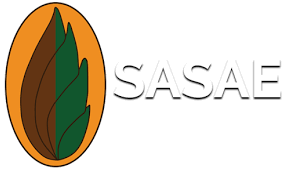The important determinants of the adoption behavior: a case study of recommended maize production technologies in Tanzania
DOI:
https://doi.org/10.17159/2413-3221/2021/v49n1a10777Keywords:
Adoption behaviour, important determinants, maizeAbstract
Numerous technologies have been developed in the agricultural sector to facilitate its contribution to the livelihood of the people. However, the adoption of these technologies has been very low or non-existence at all. This paper determined the important factors/variables that determine adoption behaviour. A validated, pre-tested structured questionnaire was used to collect data from 113 respondents, equivalent to 5 percent of a population selected to represent maize growers in selected villages of Njombe District. The collected data were analyzed using the statistical package for social sciences (SPSS) and the linear regression model was used to investigate the influence of the study variables. The study findings show both independent and intervening factors investigated determined the adoption behaviour. However, in all the technologies investigated the intervening factors influenced highly the adoption behaviour. The results presented provide sufficient evidence in supporting the relevance of intervening variables as the most important determinants of the adoption behaviour. The study suggests that emphasis be put on these variables in agricultural extension programs in order to enhance the adoption of technologies by farmers.
Downloads
References
ANOSIKE, N. and C.M. COUGHENOUR, 1990. The social-economic basis of farm enterprise diversification decision. Journal of Rural sociology 55 (1):1-24 DOI: https://doi.org/10.1111/j.1549-0831.1990.tb00670.x
BERELSON, B and G.A. STEINER, 1964. Human Behaviour: An Inventory of Scientific Findings. Harcourt, Brace and World, Inc. New York. Chicago. San Francisco. Atlanta
BOTHA, R.A., 1985. The influence of different perceptions on the adoption of practices related to drought resistance. South African Journal of Agricultural Extension 15:25-31
DUVEL, G.H and A.J. BOTHA, 1999. Human Constraints to Sustainable Agriculture in the arid regions of South Africa. The Journal of Agricultural Education and Extension 6 (1): 47-60 DOI: https://doi.org/10.1080/13892249985300141
DÜVEL, G.H and SCHOLTZ, H.P.J., 1986. The non acceptability of recommended level management practices. South African Journal of Agricultural Extension 15:1-10
DÜVEL, G.H, 1995. Resistance against stock reduction: A cognitive Field Analysis. South African Journal of Agricltural Extension. 24:45-60
DÜVEL, G.H., 1975. The mediating functions of perception in innovation decision-making. South African Journal of Agricultural Extension. 4:25-36
DÜVEL, G.H., 1991. Towards a model for the promotion of complex innovations through programmed extension. South African Journal of Agricultural Extension. 20:70-86
DÜVEL, G.H., 1995. Resistance against stock reduction: A cognitive Field Analysis. South African Journal of Agricltural Extension. 24:45-60
DÜVEL, G.H., 2004. Programmed extension (Program development and implementation). Study guide. Department of Agricultural Economics, Extension and Rural Development, University of Pretoria
FURAHISHA, E. H. (2012). Farmers Adoption of Recommended Rice Production Practices: A Case of Selected Areas in the Kilombero District of Morogoro Region, Tanzania. A Dissertation Submitted in Partial Fulfilment of the requirement for the degree of Master of Science in Agricultural Education and Extension of Sokoine University of Agricultural Education and Extension of Sokoine University of Agriculture, Morogoro, Tanzania
HABTEMARIAM, A.G (2004) The Comparative influence of intervening variables in the adoption behaviour of maize and dairy farmers in Shashemene and Debrezeit, Ethiopia. A desertation submitted in partial fulfillment of the requirements for the degree of Doctor of Philosophy in agricultural extension in the Department of Agricultural Economics, Extension and Rural Development, Faculty of Natural and Agricultural Sciences, University of Pretoria
KOCH B.H., 1986. Perception Analysis as guideline in Agricultural Extension. South African Journal of Agricultural Extension 15:19-24
KOCH B.H., 1987., Problem perception as precondition of behaviour change. South African Journal of Agricultural Extension 16:19-25
LUGEYE, S. 1994. The role of farmers’ indigenous knowledge in natural resources and management. In: Proceeding of 1st Workshop on sustainable agriculture and conservation of environment. Edited by Hatibu, N.; Mafu, S.T.A. Machang’u R.S.; and Rutatora, D.F. 26-27 July 1994, Morogoro, Tanzania, pp. 116-125
MLYUKA M. H. (2011). The Independent and Intervening Variables that Influence the Adoption of Recommended Fertilizer Package in the Namtumbo District of Ruvuma Region, Tanzania. Dissertation for Award of MSc Degree at Sokoine University of Agriculture, Morogoro, Tanzania, 84 pp
MSUYA, C. P. (2007). The Comparative role of intervening and independent variables in adoption behavior of maize growers in Njombe District, Tanzania. Thesis for Award of PhD Degree at University of Pretoria, South Africa, 199 pp
OBINNE, C.P., 1991. Adoption of improved cassava production technologies by small-scale farmers in Bendel State. Journal of Agriculture, Science and Technology
OKOYE, A.A., 1989. Factors affecting adoption process by farmers in selected local government areas of Anambra State, Nigeria. The Nigeria Agricultural Journal, 24: 9-20
ROGERS, E. M. (1995). Diffusion of Innovation. (4th Ed.), Macmillan Publisher, New York. 453pp
ROGERS, E.M., 1983. Diffusion of Innovations. Third Edition. The Free Press A Division of Macmillan Publishing Co., Inc. New York
Downloads
Published
Issue
Section
License
Copyright (c) 2021 C.P. Msuya

This work is licensed under a Creative Commons Attribution 4.0 International License.







.png)